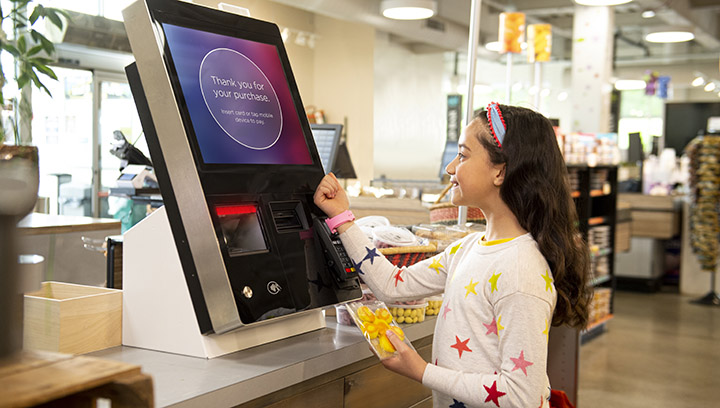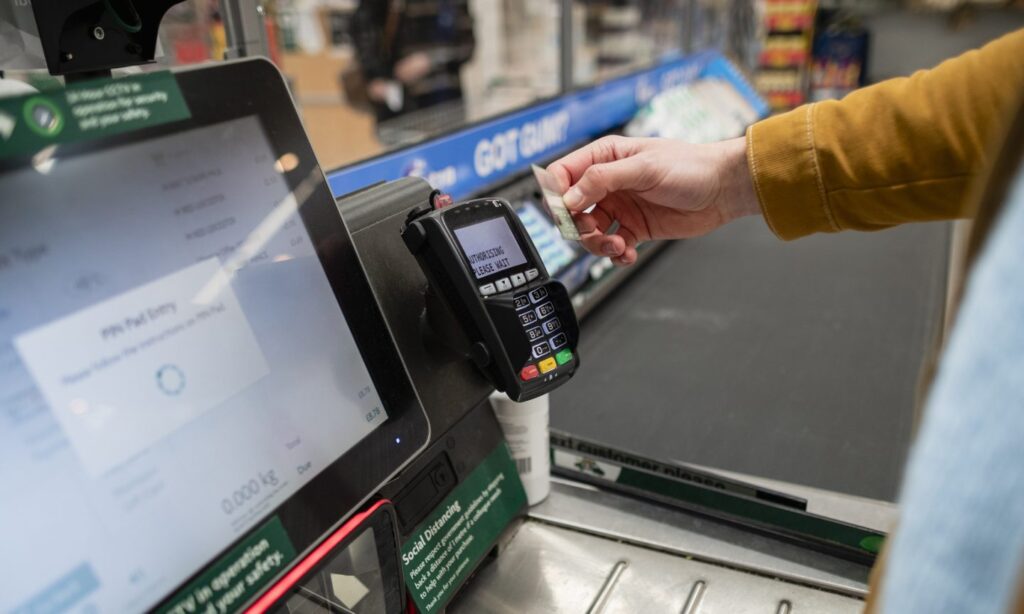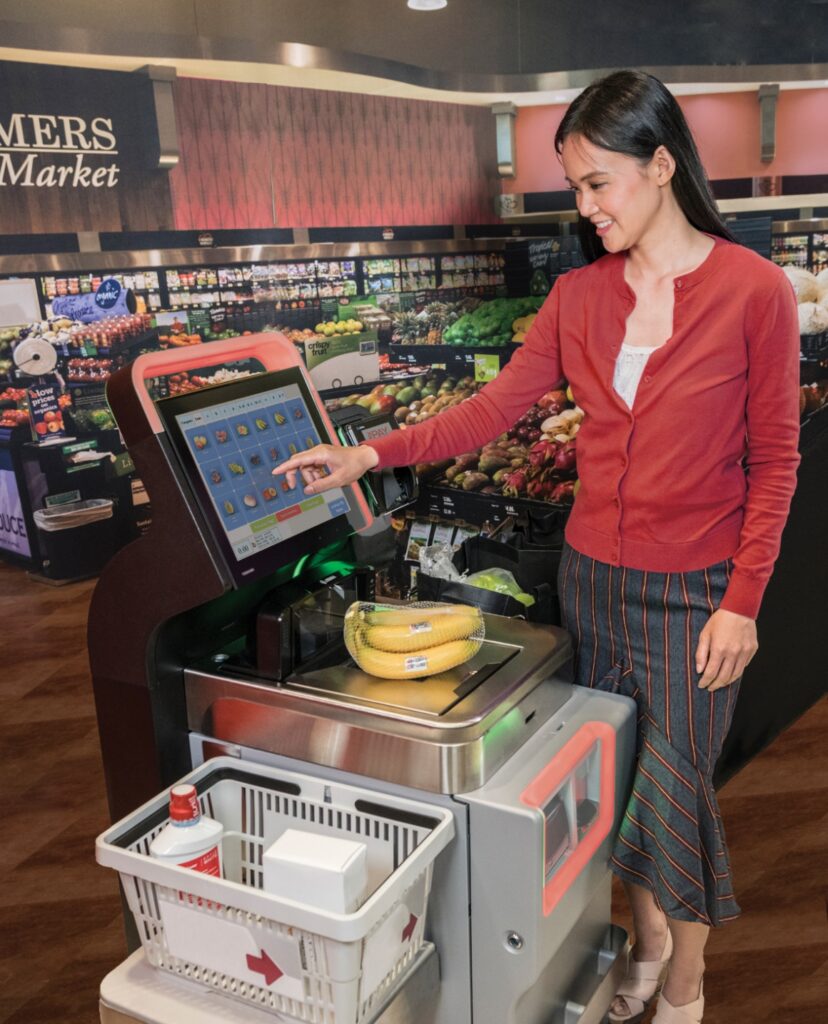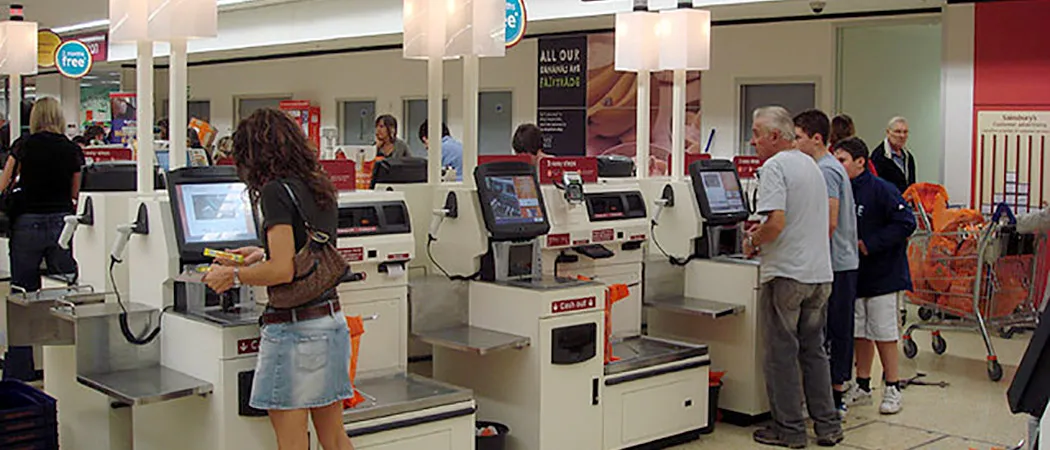Navigating the Pros and Cons of Self-Service Checkout: A Shopper’s Guide
Shopping has undergone a significant transformation with the introduction of self-service checkout options in stores. As technology continues to evolve, consumers are presented with the choice of traditional cashier-assisted lanes or the convenience of self-service kiosks. In this guide, we will explore the pros and cons of self-service checkout to help shoppers make informed decisions.
Just as the decision between traditional checkout and self-service options involves weighing convenience and efficiency, selecting the right plush robes for men requires consideration of comfort and style preferences.
Embracing Efficiency

Self-service checkout systems have gained popularity due to their efficiency. One of the primary advantages is the speed at which customers can complete their transactions. With fewer interactions and the ability to scan items independently, shoppers can navigate through the checkout process swiftly. This is especially beneficial for those with a limited number of items, allowing them to make quick and hassle-free purchases.
Additionally, self-service checkout often eliminates long queues, providing a seamless experience during peak hours. Customers can avoid the frustration of waiting in line, making the overall shopping trip more time-efficient. The convenience of a swift checkout process is a key factor in the appeal of self-service options for many shoppers.
Just as self-service checkout streamlines the shopping experience, business selling solutions offer tools and strategies to enhance operational efficiency and customer engagement.
On the flip side, the emphasis on efficiency may compromise the human touch that some customers value in traditional checkouts. The absence of personal interactions with cashiers may be perceived as a drawback by those who appreciate the social aspect of shopping. Striking a balance between speed and interpersonal connection becomes crucial in enhancing the overall shopping experience.
Autonomy and Privacy
Another advantage of self-service checkout is the sense of autonomy it offers to customers. Shoppers can take control of their shopping experience by scanning and bagging items at their own pace. This autonomy can be empowering, especially for individuals who prefer to manage their transactions independently.
Just as deciding between traditional checkout and self-service involves weighing convenience and efficiency, choosing the right THz components requires a balance between specifications and performance.
Moreover, self-service checkout can contribute to increased privacy. Some shoppers may appreciate the reduced need for interaction with cashiers, providing a more discreet environment for their purchases. This aspect can be particularly appealing to those who value their privacy or wish to minimize social interactions during their shopping trips.
However, the autonomy provided by self-service checkout is not without its challenges. Some customers may feel overwhelmed or anxious about navigating the technology independently, leading to potential errors and frustrations. Retailers must address these concerns by offering user-friendly interfaces and adequate support for those less comfortable with the technology.
Similar to the efficiency and convenience of self-service checkout, the options for orthopedic stem cell therapy in Phoenix present a spectrum of benefits, promising improved functionality and a renewed sense of well-being.
Technological Challenges and Learning Curve
Despite the convenience and autonomy offered by self-service checkout, there are notable challenges associated with the technology. One of the significant drawbacks is the potential for technological glitches. Customers may encounter issues with scanning items, processing payments, or dealing with unresponsive touch screens. These technical hiccups can lead to frustration and delays, negating the promised efficiency.
Moreover, there is a learning curve associated with self-service checkout systems. Some shoppers, especially those less familiar with technology, may find it challenging to navigate the interface and correctly scan items. This learning curve can contribute to a sense of unease and reluctance to adopt self-service options, particularly among older or less tech-savvy individuals. Did you know that the most modern retail businesses nowadays incorporate stainless steel misting system to create comfortable and refreshing environments for their customers?
Retailers must prioritize ongoing education and support to bridge the gap for customers facing technological challenges. Implementing clear instructions, user-friendly interfaces, and readily available assistance can significantly enhance the user experience and encourage broader acceptance of self-service checkout systems.
Reduced Human Interaction

One of the contentious aspects of self-service checkout is the reduction in human interaction. While some shoppers appreciate the speed and efficiency of automated systems, others miss the personal touch provided by cashier-assisted transactions. Human cashiers offer assistance, answer questions, and provide a level of customer service that self-service kiosks may lack. Similar to the self-guided nature of self-service checkout, the kambo ritual in Austin TX is a personal and introspective journey for individuals seeking healing and spiritual connection.
Additionally, the absence of human interaction can lead to issues with resolving problems or unexpected situations. In a traditional checkout setting, cashiers can quickly address issues such as pricing discrepancies or item malfunctions. Self-service checkout, on the other hand, may require the intervention of store staff, potentially causing delays and inconvenience for customers.
Striking a balance between automation and human touch becomes essential. Retailers could enhance self-service checkout experiences by integrating features that allow for customer assistance when needed. For instance, implementing a call button or a designated staff member to assist with complex transactions can mitigate the drawbacks associated with reduced human interaction.
Just as shoppers weigh the pros and cons of self-service checkout, akin to deciding whether to embrace the digital or stick with the familiar, dog owners in Seattle encounter a parallel dilemma in selecting the right grooming option for their furry companions. Much like the digital convenience of self-service checkout, some may opt for the flexibility of DIY dog grooming at home, while others may lean towards the hands-on expertise of professional dog grooming in Seattle.
Security Concerns and Loss Prevention
Security is a paramount concern in the realm of self-service checkout. The autonomy granted to shoppers during the scanning and bagging process opens up opportunities for dishonest practices, such as intentional or accidental theft. Shoplifting incidents can be more challenging to detect in a self-service environment, posing a potential threat to retailers’ profits.
Furthermore, the reliance on technology in self-service checkout systems introduces vulnerabilities to fraudulent activities. Issues such as barcode swapping or attempts to manipulate the system can compromise the integrity of transactions. Retailers must implement robust security measures to mitigate these risks and ensure a secure shopping experience for all customers.
Just as self-service checkout offers a quick and efficient shopping experience, electrical stimulation in Chicago provides a modern and effective approach for fitness enthusiasts.
While self-service checkout systems offer convenience, addressing security concerns requires a multi-faceted approach. Implementing advanced surveillance systems, incorporating anti-theft measures, and educating customers on ethical shopping practices are crucial steps in safeguarding the integrity of self-service transactions.
Navigating the Convenience Dilemma: Self-Service Checkout and Shopper Satisfaction
The convenience offered by self-service checkout is a double-edged sword, and shopper satisfaction is at the forefront of this debate. On one hand, the speed and autonomy of self-service kiosks appeal to those seeking a swift and efficient shopping experience. However, an in-depth exploration reveals nuanced perspectives on shopper satisfaction. While some appreciate the convenience, others express frustration with technological challenges and a perceived lack of human touch. Striking a balance between efficiency and customer contentment is crucial for retailers aiming to enhance the overall satisfaction of their clientele.
Nowadays, finding retail stores with a self-checkout system is as easy as finding the best dumpster rental in Navarre.
The convenience dilemma extends beyond the checkout process itself, influencing the overall shopping journey. Retailers must carefully assess how self-service options impact the broader customer experience, considering factors such as ease of navigation, accessibility, and the integration of feedback mechanisms. By addressing these aspects, businesses can optimize the convenience factor, ensuring that self-service checkout aligns seamlessly with diverse shopper preferences and expectations.
Innovation in the Aisles: The Evolution of Self-Service Checkout Technology
The landscape of self-service checkout technology is continually evolving, presenting both opportunities and challenges for retailers and shoppers alike. From RFID technology to advanced image recognition systems, innovations in automation are reshaping the way consumers interact with checkout processes. While these advancements promise increased efficiency and reduced errors, they also introduce new complexities. Retailers need to stay abreast of these technological developments, ensuring seamless integration and providing adequate support to users adapting to the latest innovations.
The best Arkansas engagement photographer remarks that he always opts for a self-checkout system whenever he has the option to do so for a quick purchase.
Moreover, the integration of artificial intelligence (AI) in self-service checkout systems opens avenues for personalized shopping experiences. AI algorithms can analyze purchasing patterns, offer tailored recommendations, and streamline the checkout process based on individual preferences. As retailers embrace these cutting-edge technologies, it becomes imperative to strike a balance between innovation and user-friendly interfaces, creating a harmonious synergy between technological advancements and shopper needs.
Social Dynamics in Shopping: The Impact of Self-Service Checkout on Consumer Interaction
Beyond the transactional aspect, shopping is a social activity that often involves interactions with fellow shoppers and store staff. The rise of self-service checkout prompts a reevaluation of the social dynamics within retail spaces. While some individuals appreciate the autonomy and reduced human interaction, others find joy in the communal experience of shopping. Retailers must carefully consider how self-service options impact the social fabric of their stores, seeking ways to foster community and engagement within the evolving landscape of automated transactions.
Understanding the social dynamics involves acknowledging the diverse needs of shoppers. For some, the efficiency of self-service is paramount, while others prioritize the camaraderie of shared shopping experiences. Retailers can enhance social interactions by implementing features that encourage collaboration, such as shared self-service kiosks for group purchases or designated communal areas within the store. Striking a balance between automation and social engagement is key to creating a shopping environment that caters to the varied preferences of the consumer base. Just as the efficiency of self-service checkout enhances the shopping experience, the captivating performances of a magician in Los Angeles enrich social gatherings and events with a touch of magic.
Environmental Considerations: Self-Service Checkout and Sustainability in Retail
As environmental consciousness becomes increasingly prevalent, the sustainability of self-service checkout practices comes under scrutiny. While the automation of transactions may reduce paper usage and streamline processes, the environmental impact of manufacturing and maintaining electronic equipment raises important questions. Retailers must evaluate the ecological footprint of their self-service systems, considering factors such as energy consumption, electronic waste, and the overall lifecycle of the technology.
To address environmental concerns, retailers can implement eco-friendly initiatives in self-service checkout areas. This may include the use of recycled materials in kiosk construction, energy-efficient technologies, and proactive electronic waste recycling programs. By incorporating sustainability into the design and maintenance of self-service checkout systems, retailers can align with the values of environmentally conscious shoppers and contribute to the broader goal of creating a greener retail landscape. Just as smoothly navigating a self-checkout requires an understanding of the process, exploring healthcare services in Dallas Metroplex demands familiarity with the available services.
The Future of Retail: Navigating Beyond Self-Service Checkout

The landscape of retail is in a perpetual state of transformation, and self-service checkout is just one chapter in this evolving narrative. As technology continues to advance and consumer preferences shift, retailers must look beyond the current landscape and envision the future of shopping experiences. The integration of augmented reality, virtual storefronts, and seamless omnichannel experiences is poised to redefine the retail landscape.
In navigating beyond self-service checkout, retailers should embrace a holistic approach to customer engagement. This involves leveraging technology to enhance both online and in-store experiences, creating a seamless transition between digital and physical retail realms. By staying attuned to emerging trends and proactively adapting to the evolving needs of consumers, retailers can position themselves at the forefront of the future of retail. Just as the self-service checkout simplifies the shopping experience, foundation repair specialists in Plano simplify the complex process of maintaining a sturdy foundation.
Conclusion: Charting the Course for a Dynamic Shopping Future
In conclusion, the exploration of self-service checkout unveils a dynamic landscape where convenience, technology, social dynamics, sustainability, and the future of retail intersect. Shoppers are presented with a spectrum of choices, each with its unique set of advantages and challenges. Retailers, in turn, face the task of navigating this intricate terrain to create shopping experiences that resonate with diverse consumer preferences.
As we move forward, the key lies in finding equilibrium — balancing the allure of efficiency with the human touch, integrating cutting-edge technology while fostering social connections, and embracing innovation with a keen eye on sustainability. The shopper’s guide to self-service checkout is a journey through these complexities, offering insights that empower consumers and guide retailers toward a future where the convergence of convenience and thoughtful consideration creates a shopping landscape that is both efficient and enriching. Similar to the convenience and empowerment offered by self-checkout systems, pharmacy consulting provides a parallel level of assistance, guiding individuals towards informed and personalized healthcare decisions.

